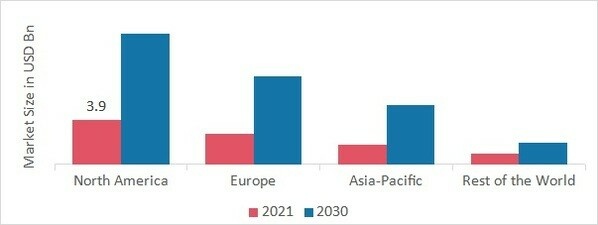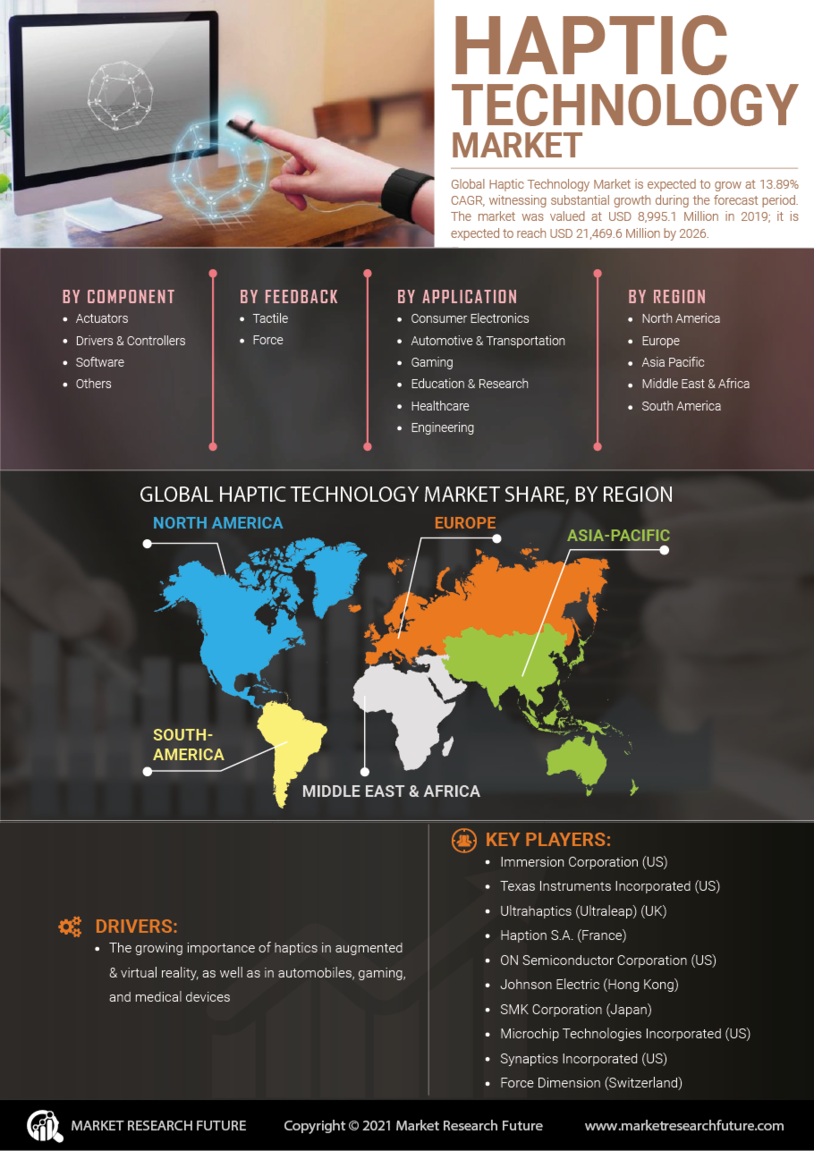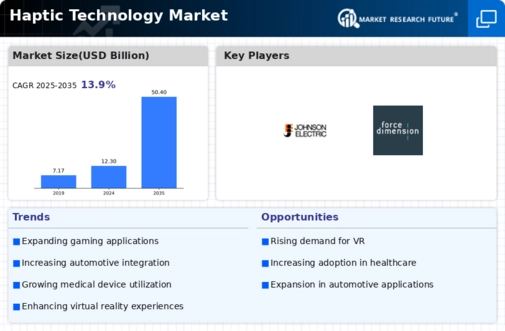By Region, the study provides market insights into Europe, North America, Asia-Pacific, and the Rest of the World. North America's haptic technology market accounted for USD 3.9 billion in 2021 and is expected to exhibit a significant CAGR growth of 42.3 percent during the study period. North America is projected to become the dominant region in the haptic technology market due to the existence of a major market leader like Immersion Corporation in the United States.
With the growing need for virtual reality in various applications, such as medical devices, autos, gaming, and others, the United States will dominate the North American haptic technology market. In the United States, there are 90.9 million AR users and 57.4 million VR users as of 2021.
Further, the major countries studied in the market report are The U.S., Canada, Germany, France, the UK, Italy, Spain, China, Japan, India, Australia, South Korea, and Brazil.
Figure 3:HAPTIC TECHNOLOGY MARKET SHARE BY REGION 2021 (%)
 Source: Secondary Research, Primary Research, MRFR Database, and Analyst Review
Source: Secondary Research, Primary Research, MRFR Database, and Analyst Review
Europe's haptic technology market accounts for the second-largest market share. Growing consumer spending on technologically advanced consumer electronics propels the European haptic technology market. Europe highly demands touchscreen technology, particularly for transportation, automobile, and consumer electronics applications. As a result, Europe is expected to drive significant growth in the haptic technology industry. The region's market expansion will be driven by the technology's cumulative use in computer-generated training applications. For example, in April 2020, FundamentalVR Limited, a medical training firm based in the United Kingdom, developed a HomeVR platform based on haptic technology for medical specialists' surgical training.
Further, the German haptic technology market held the largest market share, and the UK haptic technology market was the fastest-growing market in the European region.
Asia Pacific's haptic technology market is predicted to have significant market growth. One of the primary driving factors for market expansion is rising disposable income, which has increased the use of consumer products. Many top smartphone OEMs are headquartered in China, including Huawei, Oppo, Vivo, Xiaomi, and OnePlus. China is also the largest end-user of consumer devices, such as smartphones and tablets. The number of smartphone users in China is expected to reach almost 1.04 billion by 2022.
Moreover, China's haptic technology market held the largest market share, and the Indian haptic technology market was the fastest-growing market in the Asia-Pacific region.


 Source: Secondary Research, Primary Research, MRFR Database, and Analyst Review
Source: Secondary Research, Primary Research, MRFR Database, and Analyst Review
